Textiles
Cretan Textiles
Design Principles
In weaving, as in all craftwork created and preserved through popular culture, certain design principles or rules common to all countries and times are rigidly applied. These principles define the decoration of Cretan woven fabrics with geometrical patterns.
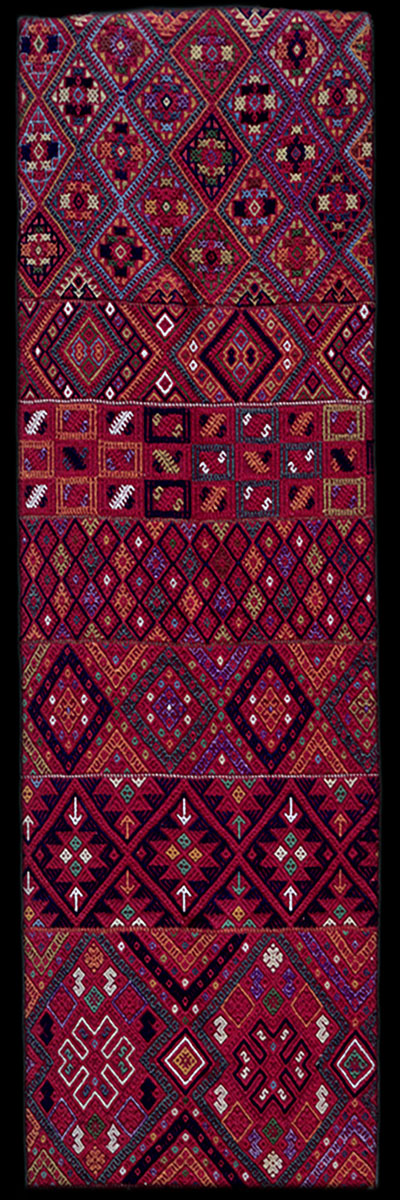
Kilimi, Kenourio 1910
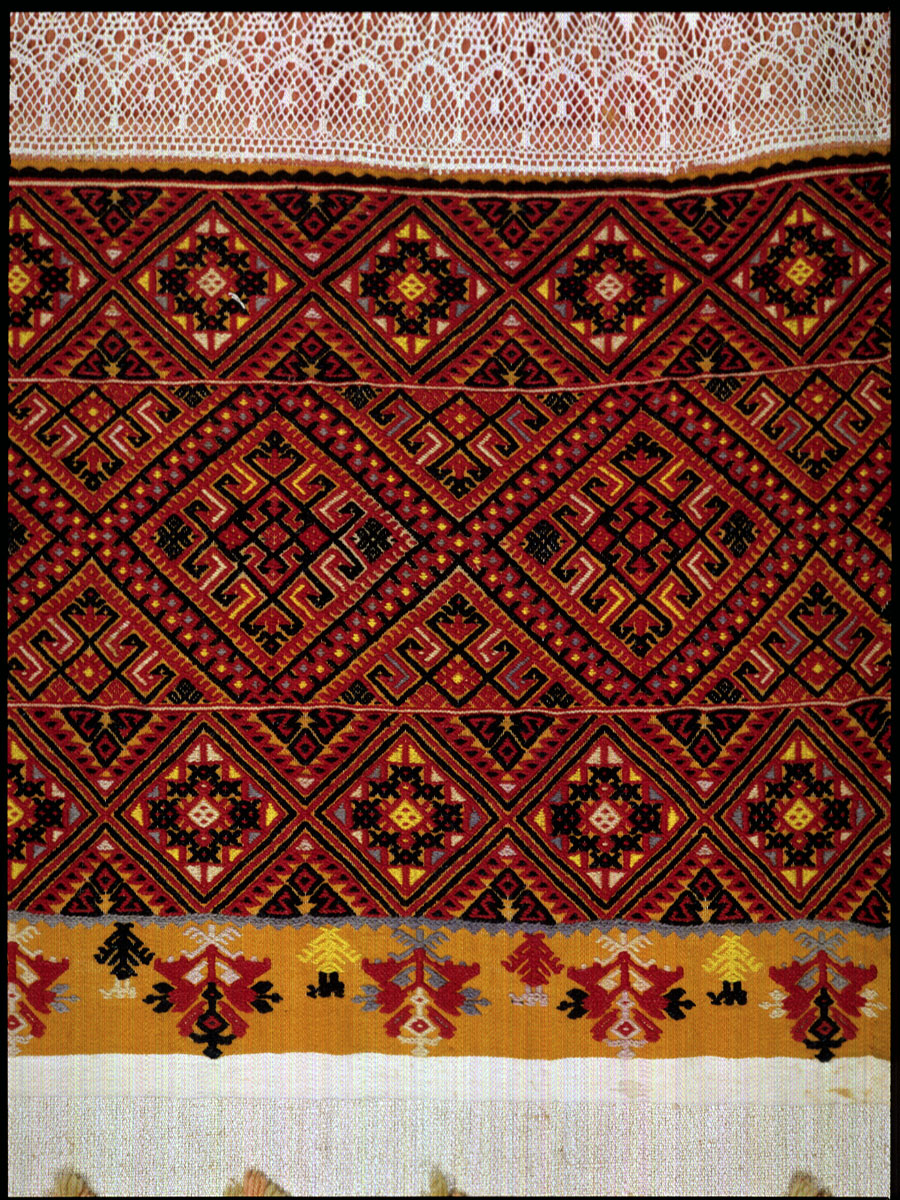
Bedspread, Merambello
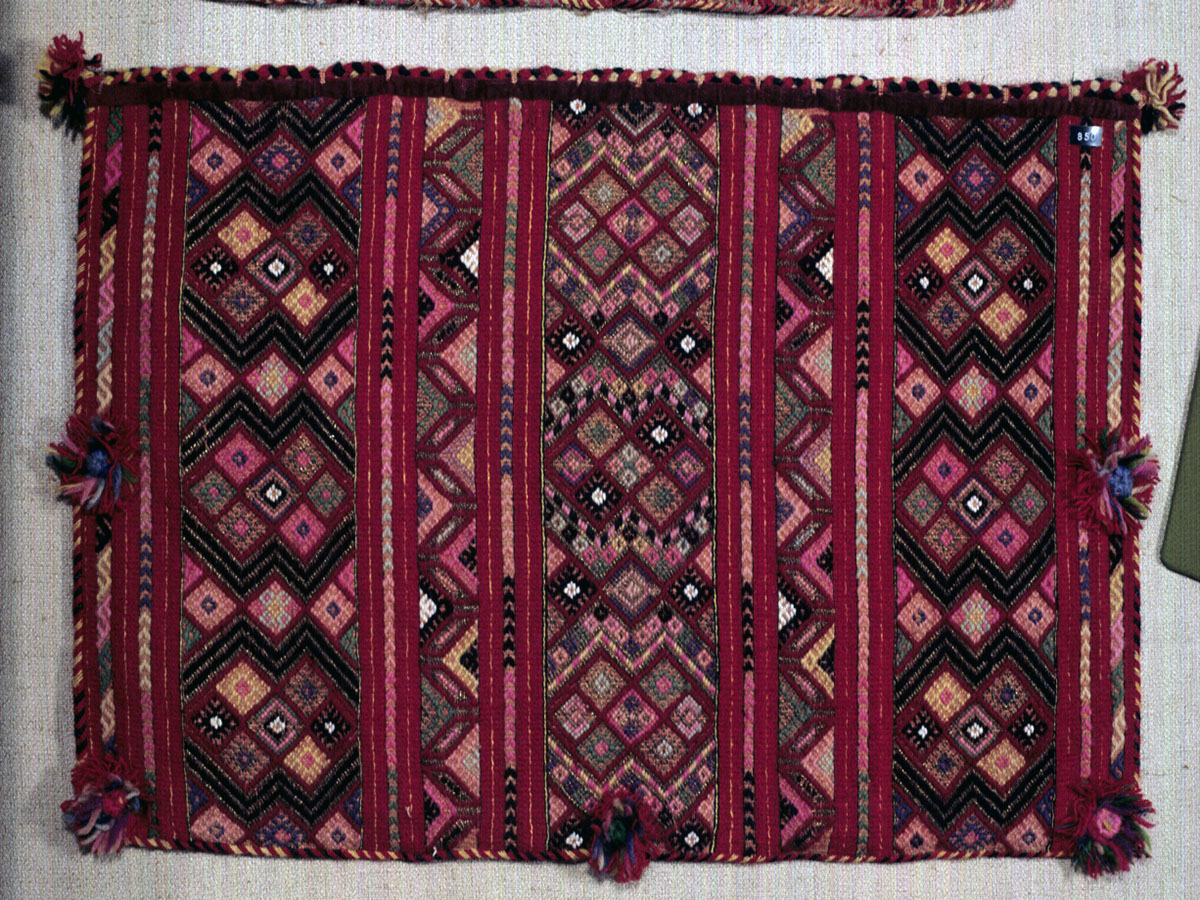
Vouryia, Kenourio. All three bands are “heptarodates”, i.e. the inner surface of the motifs is divided into seven rhombs or “roses” (roda).
Motifs
In Cretan woven fabrics with geometrical patterns we find a variety of decorative motifs, with common basic characteristics but also particular features.
Few motifs contain “lines” at right angles or parallel to the direction of weave.
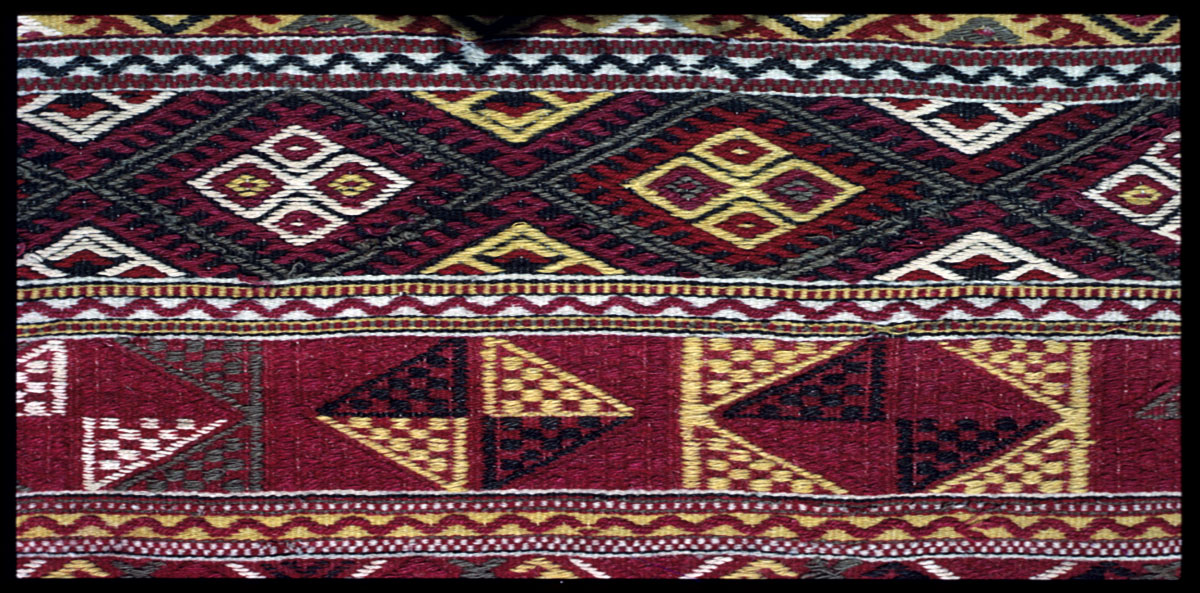
Detail of a kilimi from the Amari district 1870
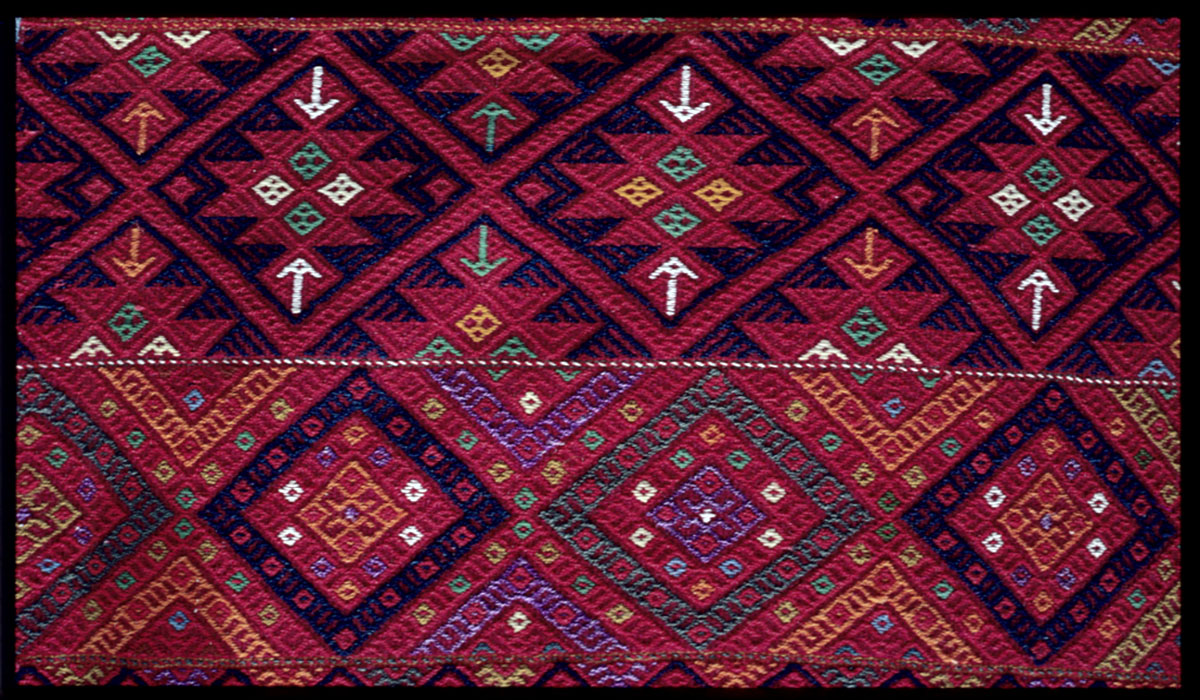
Detail of a kilimi from the Kenourio district 1910
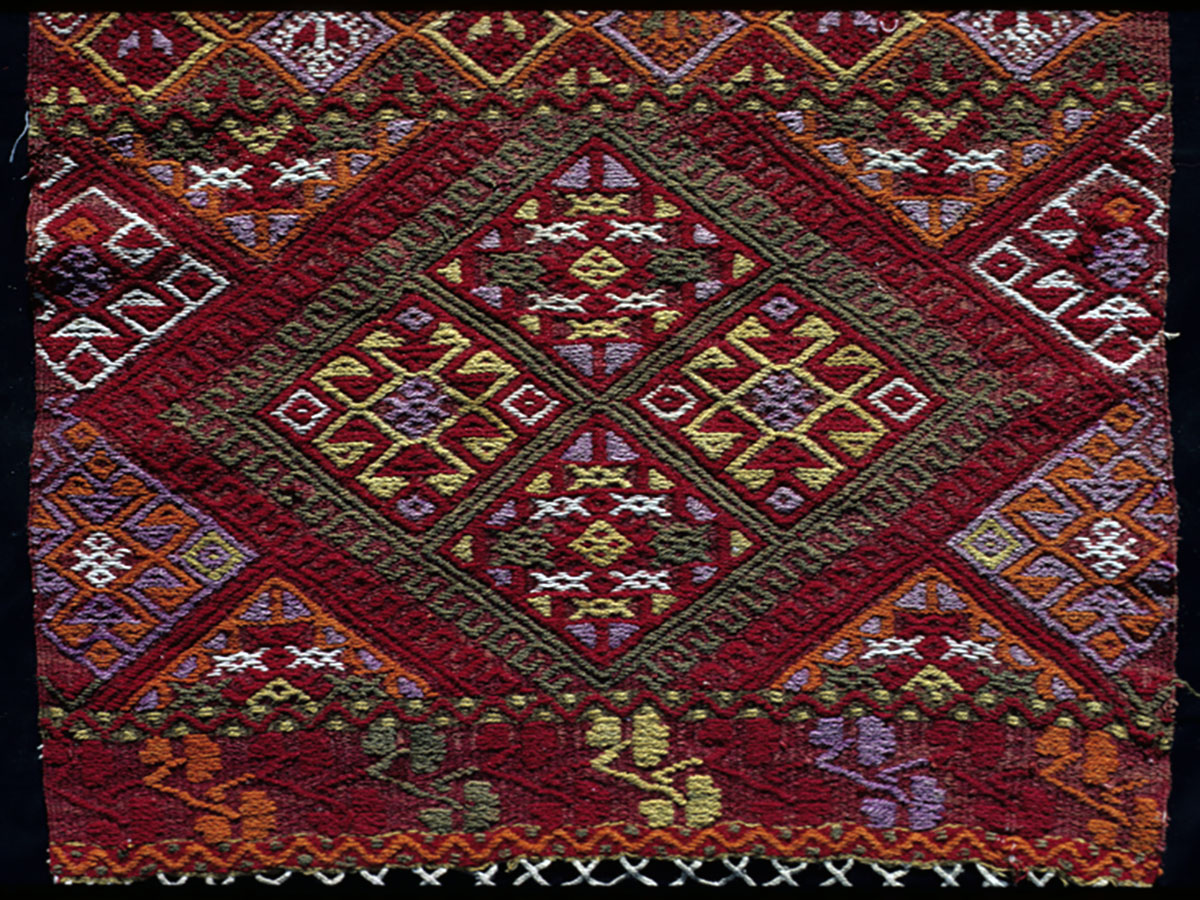
Detail of a makathi, Kalyviani Monastery
Arrangement Of Motifs In Bands
The vast majority of Cretan xobliasta woven fabrics have a similar arrangement of decorative motifs in horizontal bands. This arrangement has become standard because it is perfectly suited to weaving on a horizontal hand-loom: as the weaver works on the loom, she creates the decorative motifs simultaneously with the shuttle-woven ground weave.
In every decorative band the basic motif remains the same throughout its length. The rigid pattern rhythm, the filling-in of the gaps between the basic motifs of the band with other suitable patterns which harmonize perfectly with them, and the frequent connection of adjacent motifs by interweaving their edges, are features of the decorative bands, lending them coherence and a uniform style.
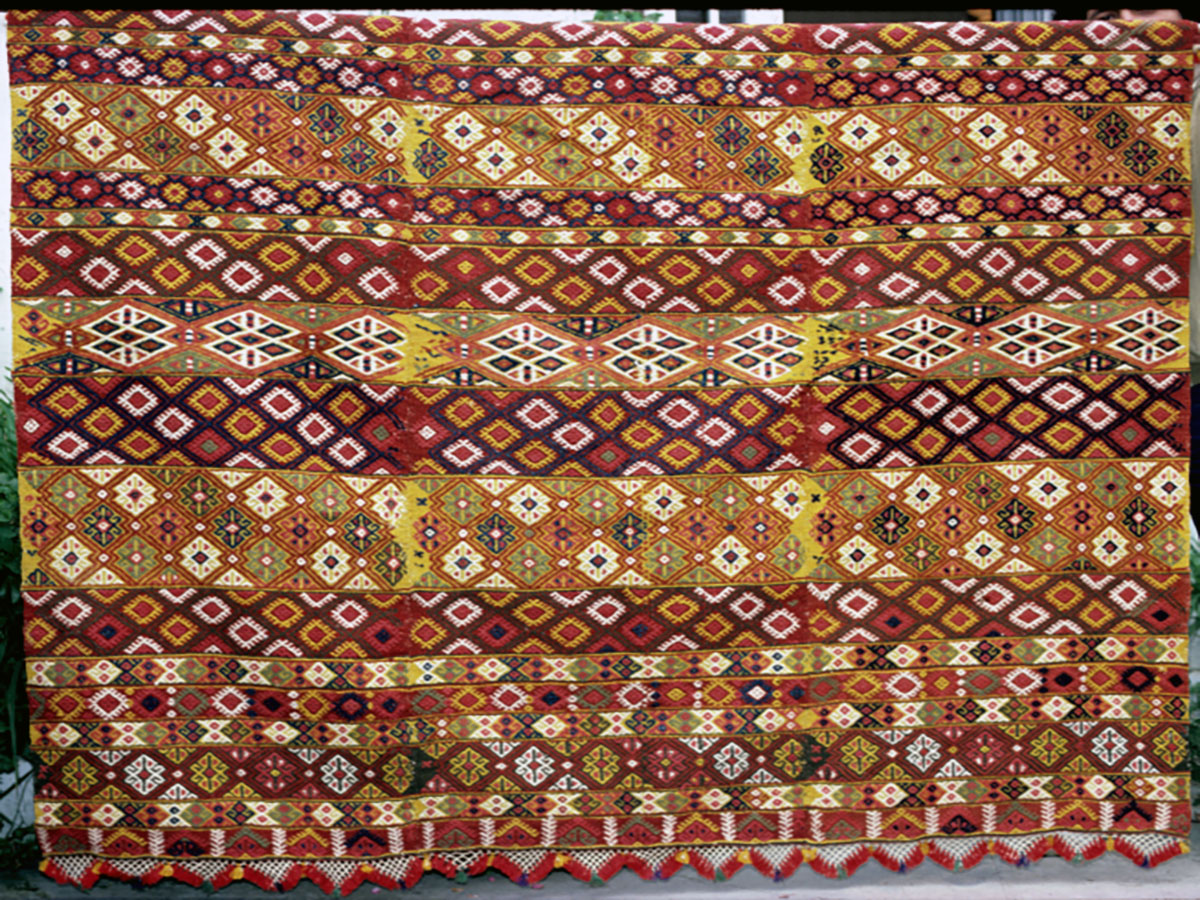
Bagali, Sitia c. 1790
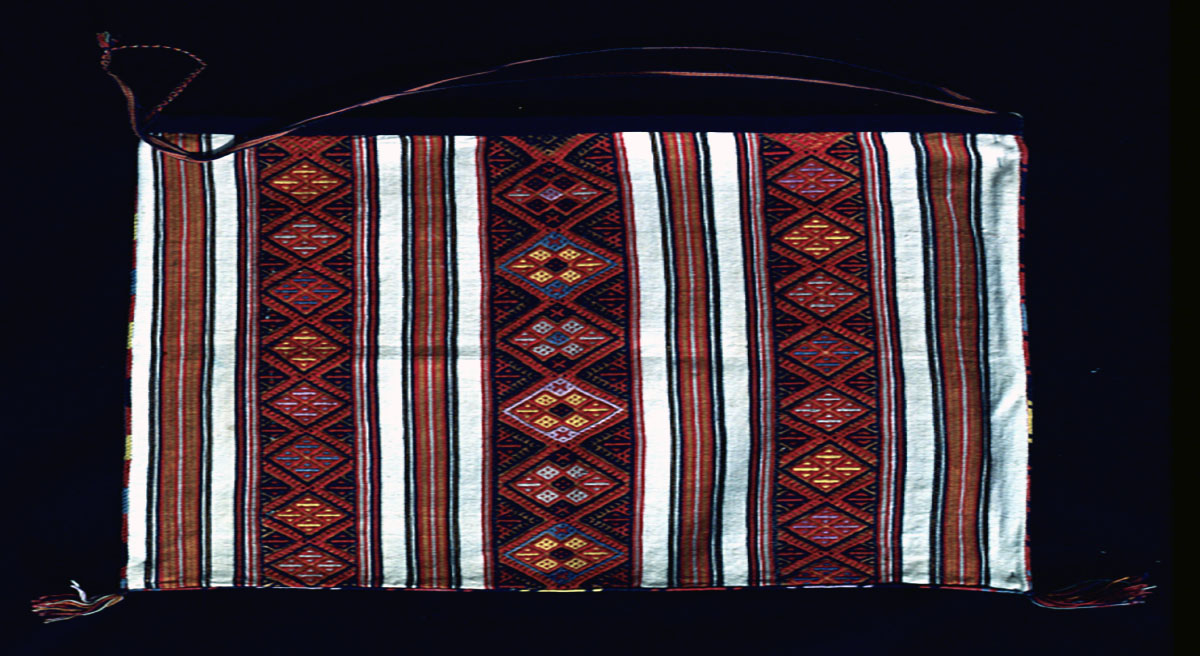
Vouryia, Merambello 1860
